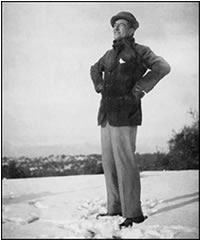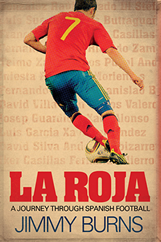Published by The Financial Times: November 20 2009
Madrid has always exercised a curious hold on me. I blame it on the fact that I was born there, only to be whisked off by my Anglo-Spanish parents to England. I have spent more than a half a century making up for my early displacement from the Spanish capital by returning to it as often as possible.
Recently, research for a book about my late father’s espionage activities there in the second world war has given me the perfect excuse to step up visits to a city that, despite its past as the administrative centre of the dictator Francisco Franco, appeals to liberal and creative minds.
 My father first arrived in Madrid in 1940 on a secret assignment when half of Spain was paying the price for being on the wrong side in a bloody civil war, and the other side was enjoying the fruits of victory. He had driven from England, across France and over the Pyrenees. The Spanish landscape was devastated. The road from Burgos to Madrid was pockmarked with bomb craters, fields disfigured with trenches and the villages torn and broken, as if an earthquake had shaken the heart of Spain.
My father first arrived in Madrid in 1940 on a secret assignment when half of Spain was paying the price for being on the wrong side in a bloody civil war, and the other side was enjoying the fruits of victory. He had driven from England, across France and over the Pyrenees. The Spanish landscape was devastated. The road from Burgos to Madrid was pockmarked with bomb craters, fields disfigured with trenches and the villages torn and broken, as if an earthquake had shaken the heart of Spain.
As he motored through the mountain passes towards the capital, he glimpsed the clear outline of Madrid on the horizon ahead of him, as I did when I was child, not as a great metropolis but as a provincial town. In the aftermath of the civil war, the city’s central artery, the Paseo de la Castellana, was lined with empty or boarded-up shops, its pavements inhabited by women dressed in black and by skeletal street urchins; its trees mutilated for firewood.
In the early 1950s, during which we flew back and forth from London to Madrid, I used to wake up to the rattle and neighing of the old horse-drawn gypsy carts as they carried rubbish from the richer neighbourhoods out to shanty villages in the nearby countryside.
It is hard to imagine this now. One flies in over skyscrapers and new residential developments on the sprawling outskirts, and into Madrid’s expanded international airport. The modern metro system goes to all points of the city.
Although large swathes of the Spanish capital have embraced modernity, some of the older neighbourhoods have, thankfully, been renovated rather than laid waste. The sophisticated Barrio de Salamanca, in particular, retains a character not much different from when my father arrived here on his posting to the British embassy in Madrid. This is an urban landscape I can recognise from my childhood, bounded to the south by Atocha station, to the north by the Bernabéu football stadium – home of Real Madrid – and to the east by the Retiro park and Las Ventas bullring.
Salamanca is, as it was when it was built in the 19th century for the aristocrats and emerging middle classes, a neighbourhood where leisure is more apparent than industry, and where shops, cafés, bars and restaurants offer a delightful mix between the traditional and experimental, from old stores and open markets selling dusty wine bottles, hams and cheeses to organic breakfast venues and clothes and jewellery boutiques.
It was here – in one of the tasteful 19th-century apartment blocks that line the Calle de Serrano – that my father rented a flat during the 1940s, making his way each morning on foot across the Paseo de la Castellana to the old palace that housed the British embassy. (The Foreign Office has recently moved its staff to a tower block nearer to the outskirts.)
Retracing my father’s steps, I can still enjoy a cocktail at the Ritz or Palace Hotel, in whose bars and dining rooms the diplomats and spies of wartime Madrid plotted and where the elegant decoration and service has survived management and ownership changes.
Similarly enduring is the Embassy tea-room whose private quarters British agents used as a safe house to hide Jews and PoWs making their way, via neutral Spain, to Lisbon and Gibraltar after the fall of France. Embassy’s wartime owner, Mrs Taylor, has long since died and the tea-room has a new frontage of a Fortnum-style delicatessen. But its convivial restaurant and bar still draw well-heeled madrileños and resident, mainly Anglo expatriates, the wartime intrigue replaced by the social and political gossip of the day.
By way of historical contrast, and paying off a debt to an old friend in the Spanish police force, I lunched recently at the German Horcher. This is Salamanca’s (and probably Madrid’s) most expensive restaurant, just by the majestic Retiro park. Established in the early 1940s, after transferring from Berlin, Horcher’s civilised luxury was used as the German embassy’s unofficial quarters, its private dining room used by visiting high-ranking Nazis.
While facing strong competition from the new wave of Spanish cuisine, Horcher is still going strong, providing traditional luxury with its heavy draped curtains, velvet-covered walls and dinner-jacketed waiters. The mainly business clientele are happy to indulge in seafood and game dishes, and an impeccable vintage wine list. I was well received here: my late uncle Gregorio was a Falangist who used to entertain here often. Unsurprisingly, I did not engage the staff, still less the management, in talking about the war but my partridge stew was worth every minute of my covert intrusion.
Old animosities are not so easily resolved elsewhere in Madrid. Whenever I go to a match at Bernabéu, I do so for the love of the game and the atmosphere – not unlike that of a bullring – but hiding the fact that I am a fan of archrivals FC Barcelona.
Of late I have taken to withdrawing from the pro-Madrid Salamanca just for the occasional evening and watching a Barca home match on TV in an anonymous bar across the Castellana, where territory is less defined and the tapas almost as good as at Serrano’s long-standing gentleman’s bar, José Luis.
My dad never liked football but had different choices to make in his time, and greater risks. Once, during the early months of his posting in Madrid, he went to Las Ventas to see a bullfight, and was arrested for refusing to stand for the German national anthem. Herr Himmler was in town.
Copyright The Financial Times Limited 2010.

